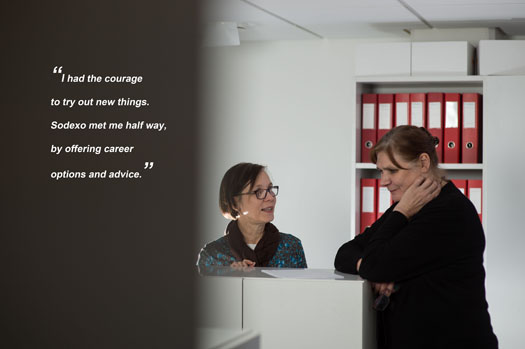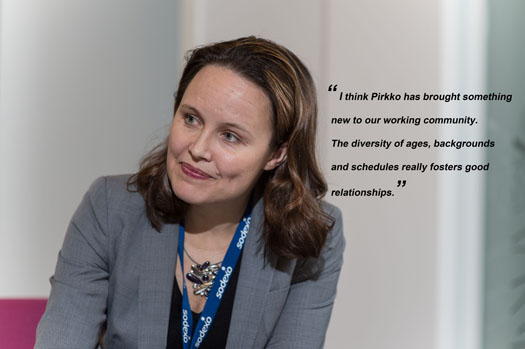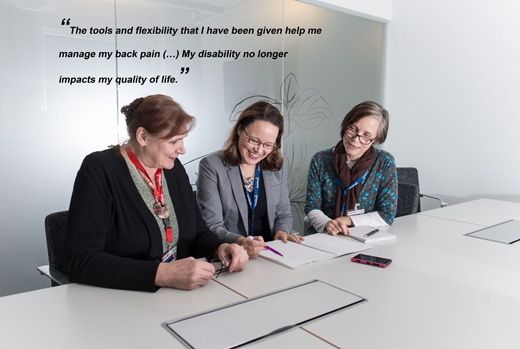Finding the courage to take on new challenges
Pirkko Tuusa’s career path has been anything but typical. After recovering from a major back injury, she returned to work at Sodexo in Finland. Pirkko and her manager Sari Pasanen explain how they tackled the challenge.
Q: How did your work life change because of your disability?

Pirkko Tuusa: I began my career in the food service industry more than 30 years ago during a time when the working conditions were not managed as well as they are today. Due to the long hours and physical nature of my job, I developed chronic backaches. By the time I began working for Sodexo, the pain had become so severe that I was forced to take a leave of absence. Although I wanted to return back to work, I couldn’t keep up with the physically demanding work in the restaurant anymore.
Sari Pasanen: After participating in a Sodexo job-training program, Pirkko was eventually able to come back to work – but in a completely different role. To find the best match, she worked in many different positions over the first several months, many related to Human Resources. A little more than a year ago, Pirkko joined my team as our Human Resources specialist. Today she is responsible for archiving our paperwork and payroll. She also manages the data entry, which supports our Human Resources department.
Q: This sounds like quite a career change! How did you both adapt?

P.T.: I had the courage to try out new things. Sodexo met me half way, by offering career options and advice. The opportunity to take part in the job-training program came at a time when the possibility of early retirement was looming in front of me. At age 50, I was given this chance to learn an entirely new skill set that eventually allowed me to move into my current position. Sodexo also provided physical therapy to help with my rehabilitation.
S.P.: We have really made an effort to focus as much as possible on making adjustments that can help with Pirkko’s back problems. That said, I think Pirkko has brought something new to our working community as well. The diversity of ages, backgrounds and schedules really fosters good relationships.
Q: How do you support Pirkko in her everyday work?

S.P.: Given Pirkko’s history of chronic back pain, we worked together to design a part-time schedule, which allows her to work shorter days and fewer hours per week. She has a special ergonomic chair and desk and also has the option of changing her workstation when she experiences pain. And of course, if Pirkko ever needs help, she knows that my door is always open!
P.T.: The tools and flexibility that I have been given help me manage my back pain. For example, it is still difficult for me to be seated all day long, so I have a desk that can be adjusted to the optimal ergonomic height, whether I am sitting or standing. With changes like these in the office design, and in my job in general, my disability no longer impacts my quality of life.



